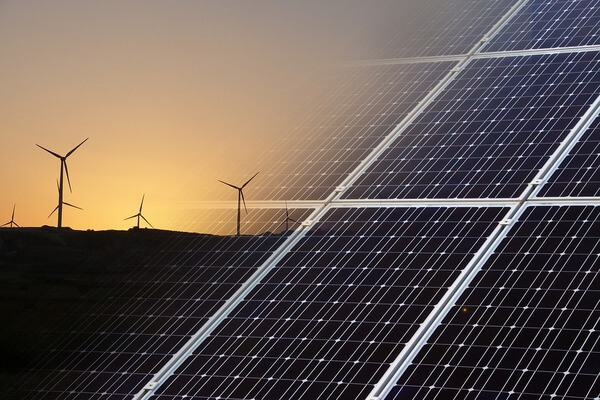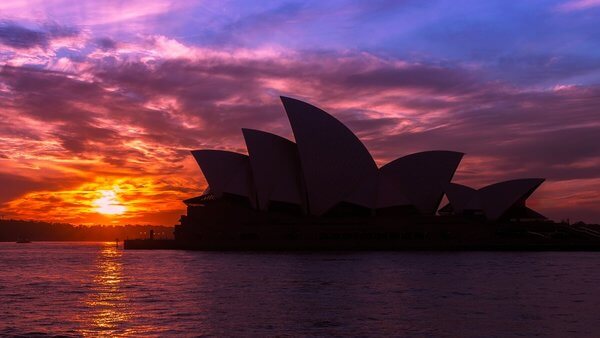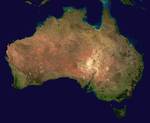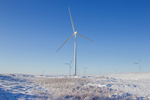News Release from windfair.net
Wind Industry Profile of
Australia Fights for Its Future
Australia is still one of the world's largest users of fossil fuels. In recent years, however, the continent has also proved to be a trend market for renewable energies such as wind and solar or battery research. It's primarily the federal states and territories that have established their own rules for the renewable expansion.
When Australia was hit by the most devastating bush fires the country had ever seen at the beginning of the year and it became clear that climate change plays a significant role in the extent of the fires, it became also clear that there can only be one direction in the future: Greenhouse gas emissions must be reduced as quickly as possible and the energy transition must be pushed forward.
However, the full extent of the fires is only gradually becoming apparent: Just this week, a study by WWF Australia was published, according to which almost three billion animals - mammals, reptiles, birds and frogs - were killed or driven from their habitats in the fires. This figure is almost three times higher than an earlier estimate made in January.
"The interim findings are shocking. It’s hard to think of another event anywhere in the world in living memory that has killed or displaced that many animals. This ranks as one of the worst wildlife disasters in modern history," said Dermot O'Gorman, CEO of WWF Australia. The researchers in the study estimate that 143 million mammals, 2.46 billion reptiles, 180 million birds and 51 million frogs perished in the flames.
This is to serve as a warning to other countries, because extreme fires will become more frequent due to climate change. It is therefore necessary to adapt environmental legislation worldwide accordingly. The key questions here are: "How quickly can we decarbonise? How quickly can we stop our manic land clearing? We land clear at a rate that’s one of the highest in the world," emphasizes Professor Dickman of the University of Sydney, who headed the study.

A way out of the crisis: switching to renewable energy to stop CO2 emissions (Image: Pixabay)
And then after the fires, COVID-19 came over the country. The government took strong measures, the lockdown brought the economy to a standstill. After the peak came the easing. Currently, however, the number of cases is rising again, after the government had already declared itself 'Corona-free' for a time.
Australia, too, is now facing the question of what the future should look like. A comprehensive economic stimulus package is needed to boost the economy. And, as in Europe, the call for a more sustainable, forward-looking economy is growing louder - one that provides clean air, more jobs and a healthy environment.
"To achieve this, we need to transition away from high-carbon pathways. Public spending must align with the most ambitious goals of the Paris Agreement - limiting global warming to no more than 2ºC, and ideally 1.5ºC by the end of the century, and reaching net-zero emissions by 2050 at the latest," the WWF calls.
This will require efforts from all people. Appropriately, Sydney, capital of New South Wales and Australia's largest city, is setting a good example: since the beginning of July, the city has been supplied exclusively with renewable energy. This includes street lighting, swimming pools, sports fields, depots, buildings and the historic city hall.

The Sydney Opera(Image: Pixabay)
The city expects the changeover to save up to half a million dollars a year over the next ten years and reduce carbon dioxide emissions by about 20,000 tons per year - equivalent to the electricity consumption of 6,000 average households.
Sydney obtains its energy from power purchase agreements (PPAs) with two solar parks and the Sapphire wind farm at Inverell, which alone will supply three quarters of the energy required. This will simultaneously create jobs, support communities affected by the Covid-19 pandemic and create new opportunities in drought-affected regions in New South Wales.
The Sapphire wind farm is the largest wind farm in New South Wales with a capacity of 270 MW generated by 75 turbines located at an altitude of 200 metres. Partly owned by CWP Renewables, CEO Jason Willoughby hopes it will serve as a role model for other cities: "Wind is a natural energy choice providing a much needed alternative to fossil fuels. We hope this inspires other councils and organisations to follow the City of Sydney’s lead."
- Author:
- Katrin Radtke
- Email:
- press@windfair.net
- Keywords:
- Australia, continent, bush fire, COVID-19, lockdown, future, renewable energy, energy ransition, WWF, Sydney, powered, wind farm, onshore, New South Wales

























